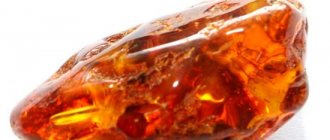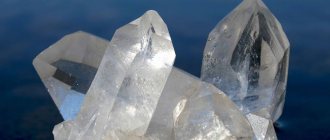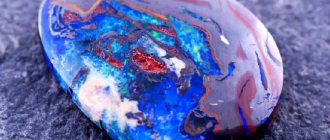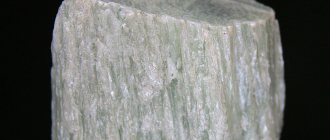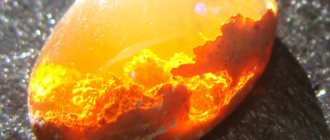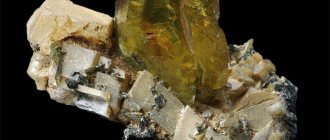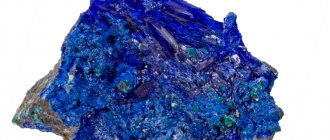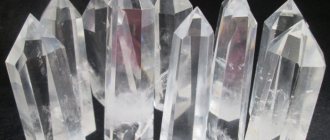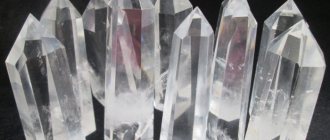In the previous article we looked at general information about what a coral reef is; where the reefs are located; who lives among corals and how to distinguish living coral from dead.
Now let's take a closer look at coral polyps, look at their most common types in the Red Sea and find out what can happen if you accidentally touch corals while snorkeling or scuba diving.
Story
Peoples living on the coast of the sea or ocean have studied the mineral coral well.
Ancient world
The origin of the mineral from the depths of the sea left no doubt about its magical capabilities:
- The Indians of Central America were confident that beads would protect them from the elements, crop failure, and disease.
- In Ancient Egypt, the mineral symbolized purity, innocence, and was an attribute of young unmarried girls. Other residents revered him as an assistant in life's ups and downs and a symbol of immortality.
- Residents of Hellas wore jewelry without exception as a guarantee of a long, happy life. And they also hoped to gain eternal life.
The oldest coral artifacts are estimated to be tens of thousands of years old. They were found at the sites of peoples of the Paleolithic era (at least 100 thousand years ago).
Coral was mined by divers and brought by sailors.
However, the sun, wind, and air were destructive for the mineral. The “twigs” cracked, broke, and became discolored.
Gradually, people learned to preserve their integrity and beauty by polishing and strengthening the mineral with resins.
The term "coral" is of ancient Greek origin (κοράλλιον).
Middle Ages
Medieval Europe adopted such views on the mineral. The most popular were rosaries and children's amulets.
For many reasons, it was prescribed for every girl from a good family to have it:
- As a symbol of modesty and virtue.
- It was believed that decoration would help in a successful marriage.
- Corals made the skin healthier and more beautiful.
Almost always it was a string of beads or earrings.
Place of Birth
Corals grow in warm seas where the water temperature exceeds 20 degrees. The largest deposits of this mineral are located in the depths of the Caribbean, Mediterranean and Red Seas. Today, large-scale stone mining is carried out:
- in Central American countries;
- Australia;
- India;
- Italy;
- Turkey;
- off the coast of Algeria;
- Tunisia.
The most valuable specimens are found in Taiwan, Japan, and off the Samoan Islands.
Production
Corals are mined both in shallow water (3-4 meters deep) and in deep water (more than 300 meters deep). They are retrieved from the seabed using bottom nets that are lowered and dragged along the seabed. This method is considered barbaric, since such extraction spoils most of the valuable mineral and causes significant harm to the fauna of the seas.
As in ancient times, the profession of coral diver is in demand today. Many such craftsmen hunt along the coasts of the Caribbean Sea. They find shallow coral reefs, dive into the water and break off some of the mineral.
What is coral
Coral can be called a stone conditionally. In fact, this is biological material - the fossilized remains of colonies of invertebrate inhabitants of the deep sea. Such organisms are called coral polyps. This is the building material of the future coral.
The process is slow - one centimeter in width per year.
The age of a coral is determined like that of a tree - by the annual ring layers.
A coral island is called an atoll. It is formed over thousands of years.
Who is it suitable for?
Born in the year of the Boar (Pig).
For those who have the number 8 in their date of birth.
Suitable by name: Svetlana, Nadezhda, Irina, Afanasy.
Element, Zodiac Signs, Planets
Coral is born in the sea and lives there for centuries, or even millennia, before falling into human hands. Naturally, his element is Water; his sign is Pisces; his planet is Neptune (according to Hindus, Mars).
Is Coral Right for You?
Not really
Energy
Yin
Physico-chemical characteristics
To a chemist, corals are almost pure calcium carbonate. The color scheme is created by magnesium carbonate, iron oxide, and organic impurities.
| Transparency | translucent, translucent, opaque |
| origin of name | The Russian word “coral” comes from it. Koralle or Polish. koral to lat. corallium, which, in turn, was borrowed from ancient Greek. κοράλλιον |
| Zodiac sign | Scorpio, Sagittarius, Capricorn, Pisces |
The organic component in most species is less than one percent. Only the black Indian mineral is completely built from organic matter.
Compatibility with zodiac signs
Coral is energetically connected with the planet Moon and Mars. Red or brown stones are ideal for Pisces and Cancer. Such talismans will give them strength and have a positive effect on their health and well-being.
It is favorable for the fire signs of the zodiac - Leo, Aries, Sagittarius - to wear corals in reddish-pink shades. A talisman made of coral of any color will bring good luck to Scorpios. For Gemini, such a stone will become a reliable talisman against negative external influences; it will help Libra to improve relationships with others.
Corals are considered minerals suitable for almost all zodiac signs. The exceptions are Virgo and Capricorn, associated with the element of earth. Taurus can wear coral jewelry from time to time; short contact with this mineral will bring him good luck.
Varieties
In nature, there are about 6 thousand species of corals in 350 shades from white to black.
They were divided into groups, using color as the basis:
- White. Known as bianco (bianco), from the Italian bianco - white. Silvery-pearl minerals are called “angel skin”. Often sold as pearls.
- Blue. They are called "akori". The rarest and most valuable. They come in blue.
- Black. It is mined only in India and the Red Sea. Trade brand "Akobar" (akbar, akabar).
- Reds. The most numerous variety, combining soft pink, fiery red shades and their combinations.
There are no yellow corals. This shade can only be guessed as an addition to red in deep orange specimens.
Popular types of red specimens:
- Pallido. Light pink.
- Rosa Vivo. Rich pink.
- Rosso. Expensive bright red jewelry raw materials.
- Rosso scuro. Crimson red.
- Secondo color. Salmon colored mineral.
These are jewelry and decorative varieties of the mineral; many of the names are commercial brands.
Coral jewelry
Interesting Facts
A curious 17th-century coral amulet is on display in the Munich Residence Treasury. Made in the form of a hand, where the fingers are folded into a “three-finger figure”. The one that is also called fig, fig. This figure in some countries was used to protect against evil spirits. But residents of Arab countries and Southeast Asian countries will be terribly offended by this figure.
Corals, like trees, have annual rings that can be used to determine their age.
The old Russian name for coral processed into a ball is korolek.
River mineral
Pisolite river coral stands out. It is a sedimentary rock, a type of limestone. It is formed on land as a result of thousands of years of cementation of layers of fossilized shells (we recommend reading about ammonites), corals, and other marine organisms.
river coral
The mineral is in demand in construction as a decorative tile source. Suitable for an aquarium as an inexpensive analogue of sea coral.
Where is it used?
The scope of application of the mineral is determined by its beauty and strength:
- Brittle sponge coral is a source of lime and a material for jewelry.
- Ordinary raw materials are used as powder in cosmetology and medicine.
- The most beautiful specimens go to jewelers and decorators.
Bracelet with coral
You can collect a collection of corals throughout your life. The variety of shapes alone is worth it: twigs, mushrooms, balls, stars, plates, tentacles. Plus colors, plus varieties of mineral.
Areas of application
Since ancient times, coral has been used as decoration - both in its raw form, and as a material for crafts, and in the form of jewelry, and in the form of decorations (for example, in the Ottoman Empire and neighboring or dependent countries, weapons were often decorated with red stones).
But still, many more obtained polyp skeletons are used as building stones... or ground into lime.
Expert opinion
Semenishcheva Polina
Specialist in mineralogy. Graduated from St. Petersburg Mining University.
Interesting : in the sea, coral is used by fish (which itch against it) and starfish (which feed on the polyps that create them).
How to wear
Wearing coral products involves aesthetics and “safety precautions”:
- They are put on a clean body, when makeup is applied and perfume is absorbed into the skin.
- After use, wipe with a damp cloth, dry, and put away in the box.
- Removed before going to the beach, visiting the pool, sauna, steam room. Chlorinated water kills stone.
- You need to touch the jewelry less often: sweat from your fingertips will leave marks on the mineral.
- Beads and necklaces are worn on clothes made of soft fabric. Rough, hard will leave scratches on the mineral.
The coral product is suitable for people of all ages. The younger the owner, the lighter and more delicate the stone.
The mineral is combined with opaque gems: lapis lazuli, onyx, turquoise, pearls. Good on its own.
Coral polyp is an amazing animal
In nature, corals grow in large colonies of animals attached to each other. This allows them to exist as one large organism.
Appearance
The coral polyp externally resembles another low-mobile sea animal - the sea anemone. It has a cup-shaped shape, equipped with a large number of fibers for hunting and luring food.
Polyps are devoid of muscles, so the body’s motor ability consists only of slightly moving the villi to circulate water around.
You can often see an entire colony of corals swaying. Sea currents contribute to the mesmerizing spectacle.
Interesting! Although polyps grow in large colonies, there are varieties known that prefer a solitary life. For example, Ceripates, characterized by a thin, long body that curls at the end.
Peculiarities
Polyps completely lack sensory organs - vision, smell. In the center of the animal there is only a large funnel-shaped “mouth” used for feeding.
Dimensions
Polyps, depending on the variety and age, can have completely different sizes. For example, the size of young corals is only 1–2 cm, while adult giants reach sizes of up to 50 cm.
Food
Coral colonies feed on sea plankton, small fish, and their fry. Despite external immobility, the sea animal captures prey with the help of tentacle hairs, injects paralyzing poison, then directs the food into the “mouth”.
Polyps tend to share food with other inhabitants of the colony if they are less fortunate in the hunt.
Reproduction
Corals are capable of reproducing both vegetatively and sexually. At night, marine animals secrete a certain number of male and female reproductive cells, forming a cloud.
When sperm and eggs meet each other, they form planulae (larvae). They settle to the bottom and form a “newborn” polyp.
How to care
Coral is fragile, you need to take special care of your products:
- Store in a separate box to prevent scratching. It is better to wrap each product with a soft napkin or paper.
- Provide constant ventilation, but protect from sunlight.
- Do not place near heat sources.
- The room should have average temperature and humidity levels.
- The mineral is cleaned with a damp cloth and spring or filtered water.
- Faded pebbles are briefly immersed in a weak solution of hydrogen peroxide.
Bracelet, ring, ring require special care when wearing.
Corals should not be dropped or tested for strength.
Origin of material
Corals are not rocks in the usual sense of the word. They are composed of aragonite and hard calcite and are the fossilized skeletons of marine animals called polyps, which are relatives of the bright, flower-like anemones and sea anemones. Coral polyps live along the equator in warm tropical seas and form absolutely incredible in appearance and beauty, fantastic forms. Their distribution is uneven. Most coral polyps live off the eastern coast of Africa.
But the most valuable coral, red, is an inhabitant of the Mediterranean Sea. This is where the main gem mining areas were located. The extraction of corals has long been carried out by residents of areas where Spain, Italy, Tunisia, Algeria, and Morocco are located today. This trade is still practiced here today. The processing of the extracted raw materials is carried out by artisans from the small Italian town of Tore del Greco, which is located near Naples.
Over the course of a year, the length of the branch increases by only a few millimeters; this is a very long and painstaking “construction”, the result of which is coral reefs, and sometimes entire islands. The longest (several hundred kilometers), the so-called Great Barrier Reef stretches along the eastern Australian coast.
Many coral reefs are located in the Pacific and Atlantic Oceans, near the Canary Islands, in the Mediterranean Sea they are “built” by polyps of Corallium rubrum, living at a depth of 10-200 m. But some “live” at greater depths, up to 1000 m, which may be due to natural movement of earth layers. The greatest demand is for red corals, which form polyps that live at a depth of 30-500 m; their growth can be several centimeters per year.
The slow growth rate and constantly increasing pollution of sea waters lead to a gradual decrease in the population of polyps. If this continues, then soon we will not be able to enjoy the beauty of the sea of gems given to us.
That is why humanity is intensively looking for ways to obtain artificial corals. For example, in 1972 in Switzerland, “Gilson coral” was synthesized from powdered calcite. The manufacturing company managed to produce corals in 12 different shades. Their properties are close to natural. Outwardly, they are practically no different; only an experienced gemologist can find the differences between them. But if you look closely, you can notice external signs:
- natural coral, unlike synthetic coral, is unevenly colored and has small stripes visible on it;
- when cutting a naturally grown coral branch, a radiant structure is visible; in artificial corals, grains, crumbs, and pieces are visible on the cut;
- To give corals a shine, their surface is treated with special waxy polishes; for natural gems, which usually have cracks and irregularities on the surface, the shine is softer.
How to recognize an imitation
Painted limestone, glass or plastic are sold under the guise of a mineral. You can distinguish imitation:
- Natural coral is lighter and warmer.
- It is not loudly bright.
- The surface of the mineral is not smooth: with potholes, porous.
The sample is immersed in water. The natural mineral will become brighter and swell slightly from the absorbed liquid. The fake will not change or will color the water (if tinted).
Substitutions made from glued coral shavings are common. This specimen looks smooth, without porosity.
Price
Coral is used as a semi-precious or ornamental material, the price of products is affordable:
- The cheapest option is to buy jewelry without a metal frame. The price range is two to three thousand rubles.
- Products in gold or silver will cost more (tens of thousands of rubles).
This is the cost of a red or pink mineral. Blue, black, pink are available at other prices.
Therapeutic effect
From time immemorial, healers have valued coral powder. Their modern “colleagues” also use the influence of the mineral:
- As an antibacterial agent that heals wounds, ulcers, and fractures.
- To alleviate diabetes and blood problems.
- Beads are suitable if the thyroid gland is sick, with acute respiratory infections, acute respiratory viral infections.
Official medicine considers corals to be beneficial due to the calcium and iodine they contain.
For a healthy person, the mineral helps to concentrate and recharges with energy. A short string of beads is recommended for those who work with the “voice” (lecturers, teachers).
The main value of a coral product is the ability to monitor the health status of the owner.
At the first symptoms of any disease, the mineral becomes dull, becomes stained, and cracks.
This is a reason to undergo a comprehensive medical examination.
Magic properties
The general valued property of corals in ancient times was to protect against the evil eye and dark forces.
General effects of the mineral
Today the list of magical properties of coral has been updated:
- It sharpens intuition and can awaken superpowers.
- It is an ally of travelers, especially by sea or alone.
- Needed by people who want to improve their own character and quality of life.
- The mineral is especially recommended for people prone to panic, unmotivated anxiety, and suicide.
- Subtle, creative natures will find a surge of inspiration with it.
You need to be careful with corals: their magic provokes the owner to go to distant lands.
A ritual has been invented to cleanse, protect housing, and attract good luck. To do this, walk around the room or house clockwise, touching all the windows and doors. The pebble is held in the hands.
Color Specialization
When using a mineral as a magical artifact, significance is attached to color:
- White coral is placed over a cradle or crib as a talisman.
- Jewelry with white or delicate pink coral is given to the “iron lady” to soften her temper.
- A sentimental, melancholic lady will be stirred up by bright red coral.
The dark red-orange mineral is a masculine attribute. It will give you determination and perseverance in life’s ups and downs.
They wear coral accessories on the waxing moon, and take them off during the full moon.
Compatibility with other stones
Astrologers claim that precious stones have different energies, which can be combined harmoniously, but can also conflict with each other. The following gems are optimally combined with coral:
- Amethyst;
- White pearls;
- Labradorite;
- Onyx;
- Turquoise;
- Lapis lazuli;
- Sapphire.
CORAL AND SAPPHIRE
Not the most successful, but acceptable combinations of coral with stones:
- Diamond;
- Aventurine;
- Emerald;
- Amber;
- Topaz.
CORAL AND EMERALD
Jewelry with which coral is absolutely incompatible:
- Malachite;
- Jasper;
- Ruby;
- Pomegranate;
- Agate;
- Bloodstone;
- Chalcedony.
Also, astrologers do not recommend framing pink and red corals in a gold frame.
